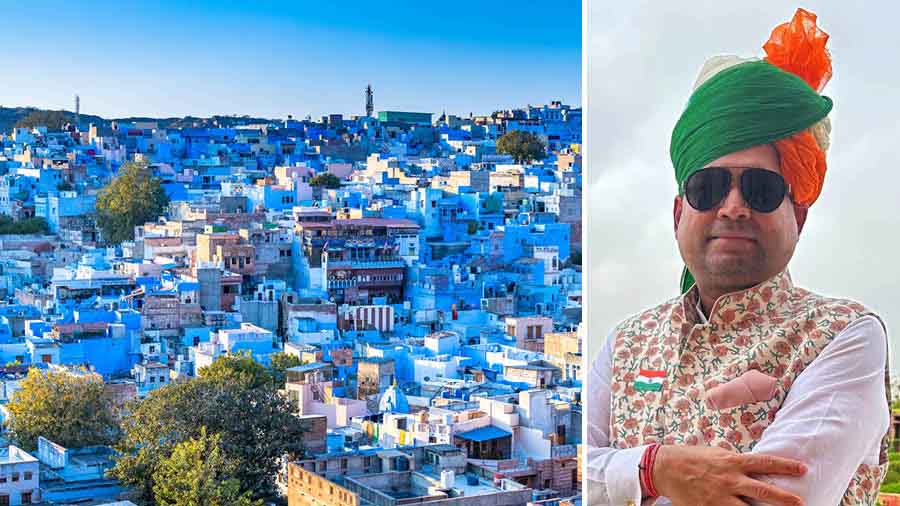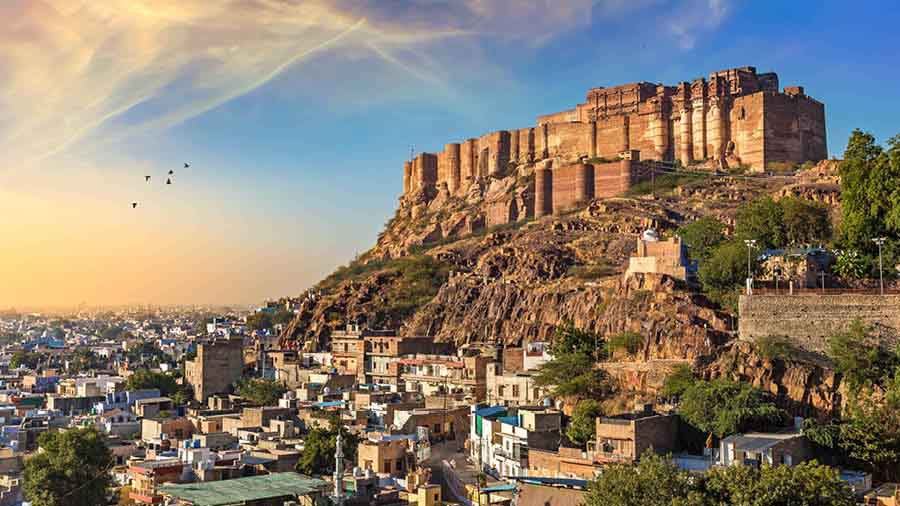On Independence Day 2023, I was in Jodhpur, Rajasthan, where I had the privilege of staying at the famed Umaid Bhawan Palace, which is the residence of the present scion of the royal family of Rathore Maharaja Gaj Singh.
The palace is part home to the royal family, part museum and part luxury hotel. Managed by Taj hotels, it is the flagship in the hotel’s luxury palace portfolio, and for good reason.
To understand the importance of Umaid Bhawan Palace, we must first learn a little about the city of Jodhpur. One of the jewels in the rich canvas of Rajasthan, it is northwest of the Luni River, on a sterile tract of land bounded by lofty hills of sand. A desert climate prevails in the region marked by a near complete absence of precipitation. The average temperature in Jodhpur is 26.5°C and approximately 323mm of rainfall occurs yearly. Summer begins at the end of June, but May is when the mercury shoots up, often reaching upwards of 34°C. Monsoon is but momentary here, and the arid sub-tropical climate and its location in the driest part of the state are enough to earn it the moniker ‘Sun City’.
Jodhpur is also known as the Blue City thanks to the many blue buildings in the older sections of town. There are many theories to explain this unique feature, but whatever the truth, it makes for an unforgettable sight.
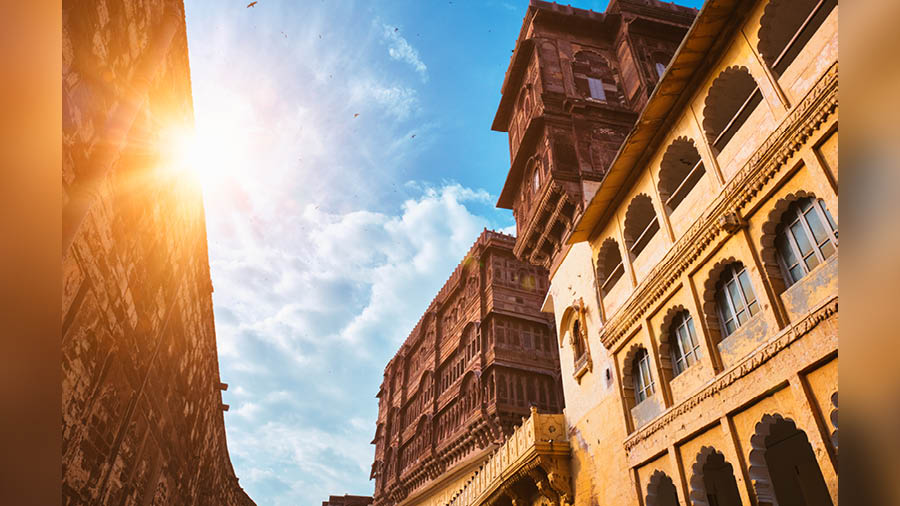
Jodhpur has the moniker ‘Sun City’ as well as the Blue City Shutterstock
The city of Jodhpur, now the second largest in the state, was founded in 1459 by Rao Jodha, a Rajput ruler, and served as the capital of the princely state of Jodhpur which reached its heights under the ruler Rao Maldeo between 1532 and 1569. Over the years, the three princely states of Jodhpur, Jaipur and Udaipur forged an alliance to prevent the Mughal onslaught and the reins of power passed to the Marathas, eventually coming under the British colonialists and then joining the Indian union as the state of Rajasthan in 1949. The princely states were officially dissolved in subsequent years.
The Rathores are known for their keen interest in architecture and public reform. The history of the region is dotted with their many social initiatives and fine constructions such as step wells, dams, temples and even palaces. One of these is the majestic Mehrangarh Fort, with its various palaces, such as Phool Mahal, Moti Mahal and others, built in different centuries. Mihirgarh, as the fort was originally known — a name derived from the words “Mihir” which means the Sun deity and “Garh” referring to the fort — is also the biggest fort in India, covering an area of 1,200 acres.
The full flow of these reforms was felt during the reign of Maharaja Jashwant Singh II (1873 - 1895 AD), best remembered perhaps for establishing courts of justice. The mantle passed on to Maharaja Umaid Singh, under whom began the golden era of the dynasty. He is credited with having built hospitals and educational institutions that are still in use today. His finest structure is also the greatest jewel in the state’s architectural crown, the Umaid Bhawan Palace. The youngest palace in Asia and among the largest private residences in the world, it is the epitome of Rajasthan’s royal heritage.

The Umaid Bhawan Palace, and a room in the hotel Shutterstock
Upon his demise, Hanwant Singh became king at a very crucial time in Indian politics. He served as the last absolute ruler of Jodhpur before Indian Independence stripped the maharajas of their power. Rajasthan’s first democratic elections were held in 1952 and Singh and his party romped to victory with a huge margin. But alas, he perished in a plane accident soon after.
That’s how the present maharaja, Gaj Singh, came to be crowned on May 12, 1952, at the age of only four. I feel extremely honoured to have a friendly relationship with him, and to stay with him and his family at the palace. During our interactions, I have learned that “Baapji” as he is lovingly called, still remembers how father and son used to fly in their own aircraft.
Maharaja Gaj Singh did his early schooling at Pune Military School and then went over to England, where he studied at Eton and then Christ Church, Oxford, where he obtained a bachelor’s degree in philosophy, politics and economics. His journey as a young maharaja began in 1970 when he returned to his homeland. The entire city turned up to welcome him back. They performed aarti every step of the way and thousands of residents showered flower petals as their king made his way to the palace, in a journey that took hours thanks to the massive crowd.
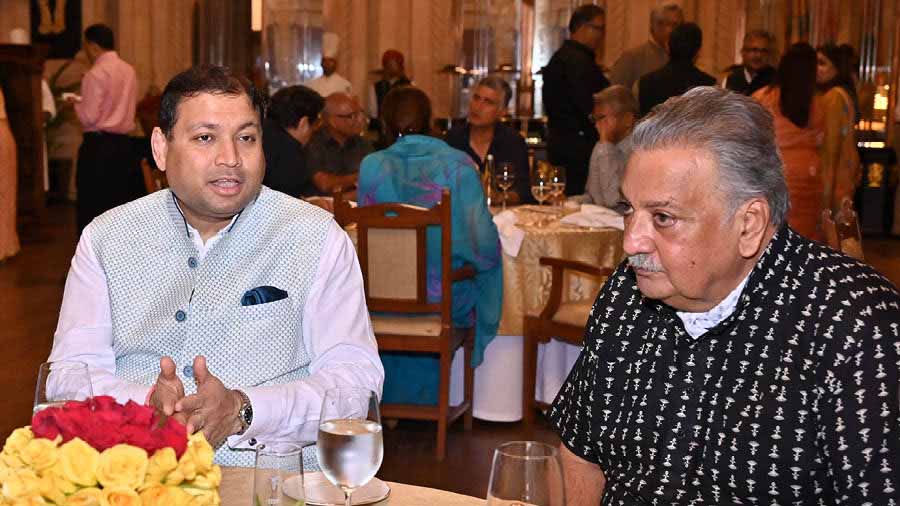
Sundeep Bhutoria along with the Erstwhile Jodhpur Royal Maharaja Gaj Singh ji at a get-together hosted by him in Jodhpur Dinesh Sharma
Maharaja Gaj Singh responded to this adulation by assuming the role of a caretaker of his people, and for this he was fondly called ‘Baapji’. He married the Princess of Poonch, Kashmir, Maharani Hemlata Rajye and has two children and now, two grandchildren as well. In his desire to connect more closely to his people, he has walked all the way to the Ramdevra Temple, 190 kms away in the Jaisalmer district. Singh has led the reorganisation of his affairs and vast estates, laying the foundations for a brighter future for the state. His major focus has been on improving the tourism sector and in preserving the heritage of Rajasthan. The Mehrangarh Museum was developed, and many heritage buildings and step wells were restored. Singh was among the first to propose repositioning of the state’s heritage features for tourism. In fact, the pride of the Indian Railways today, the country’s first luxury tourist train, the Palace on Wheels, was his idea.
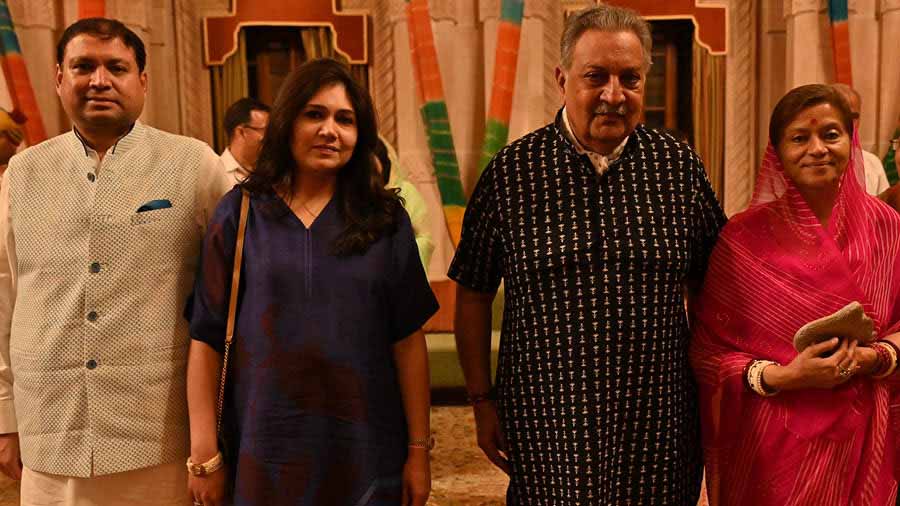
(L-R) Sundeep Bhutoria, Manjari Maheshwari Bhutoria along with the Erstwhile Jodhpur Royal Maharaja Gaj Singh ji and Erstwhile Royal Maharani Saheb Hemlata Rajye ji of Jodhpur at the get-together Dinesh Sharma
An ardent fan of polo, the maharaja continues to organise many events such as the Hermes Cup, Maharaja Gaj Singh Cup, Vaara Rajye Cup amongst others. He is also a patron of the Marwari Horse Society that is the custodian of the ‘Marwari’ breed of horses. Recently, Bangladesh has shown an interest in procuring some of these special horses. His contribution to the field of education is immense and for girl students, he has established Rajmata Krishna Kumari Girls’ Public School as per his mother’s vision. He has also commissioned projects for women’s empowerment such as Shakti Veerni and Jal Bhagirathi.

Sundeep Bhutoria and Shelja Singh Rathore with (right) Kavita Rathore and designer Raghavendra Rathore Dinesh Sharma
Heroism seeps out of every grain of sand in this region, but simple mortal as I am, and a die-hard foodie at that, my narrative would not be complete without a note on the food of this region. Special mention must be made of Chaudhary’s mirchi bad, Surya’s samosa, Shri Ram’s mogar kachori and Manak Chowk’s pyaaz kachori. Bhawani’s Daal baati and churma and Bhati for its chai are a rage in the city, as are the Vijay and Shandar restaurants which are famous for cooking traditional delicious food in desi ghee. As for sweets, Chotu Motu’s jalebi, Chaturbhuj’s gulab jamun, Mulji’s malpua and thhor, Mohanji’s laddoos and ghewar have their special position in Jodhpur’s culinary scene.

Some of Jodhpur’s food gems. (L-R) Surya Namkeen for the best samosas, a close-up of a Shri Mishrilal Hotel favourite and Mohunji Mithaiwala for the best laddoos and Ghewar Kamal Singh Bhati
During my last trip, I also hosted a get-together of friends and acquaintances at Umaid Bhawan itself and was thrilled when they all went gaga over the Italian and Rajasthani cuisine that was served by the palace.
Every speck of Rajasthan has a rich tale to tell. This is a very brief account of a family, a state and a city that has been in the forefront of splendour, valour, skill and creativity. Its richness can’t be captured in so few words and must be experienced by all with an interest in India’s history.
